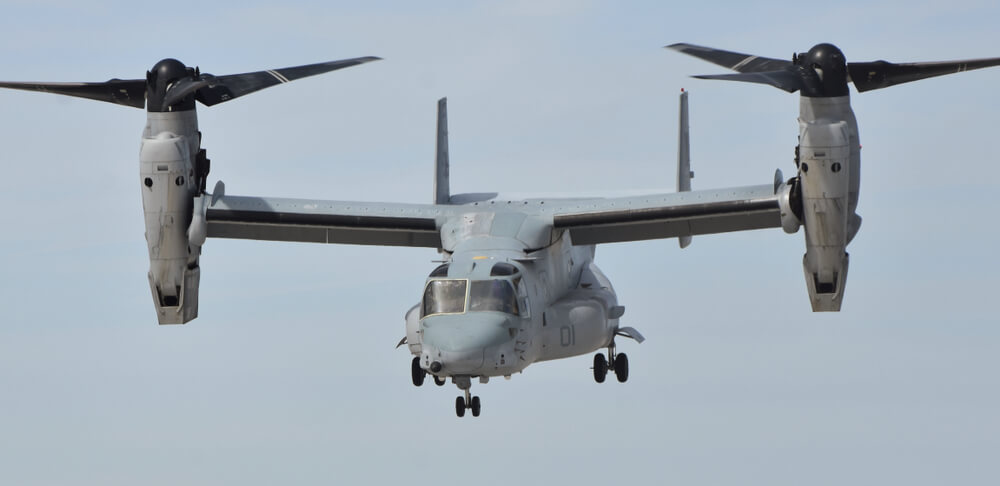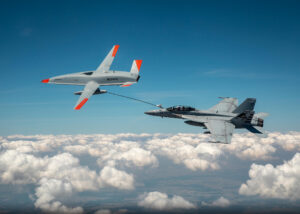The Pentagon has released two reports in recent weeks that detail the official investigations into the causes of two fatal Osprey accidents in 2023. These reports have been followed by media stories delving deeper into the issues raised in the official reports.
The report on the Marine Corps MV-22 accident on Aug. 27, 2023, that took the lives of three service members, has pointed to operator error as the clear causal factor, not the aircraft. The report also focused on squadron leadership who “permitted cultural issues that disregarded safety of flight.”
The report on the Air Force CV-22 that crashed off Japan on Nov. 29, 2023, killing eight airmen is more complicated. It implicated both a failure of material and subsequent operator error in decision-making that rendered a serious but salvageable situation impossible from which to recover.
As a former Marine Corps pilot with over 5,000 flight hours and as an engineer, I want to help set the record straight on the safety of the V-22, which can take off and land like a helicopter and tilt its rotors and fly like an airplane, faster and at greater altitudes than a helicopter.
Osprey not an outlier
In 2007, the Osprey emerged from a sometimes-challenging developmental phase and reached initial operational capability with the Marine Corps. From that time forward to today, the program has experienced nine fatal accidents. In that same period, the military has experienced roughly the same number of fatal H-53 helicopter accidents, twice as many fatal H-47 Chinook accidents and scores of fatal H-60 Black Hawk helicopter accidents.
Experts who have looked at the statistics in further detail have noted that when examining mishap rates per flying hour (statistics that are hard to pin down), the V-22 safety record is virtually indistinguishable from other aircraft flown by the U.S. military.
Simply stated, the Osprey is not an outlier when it comes to safety.
These comparisons are not meant to diminish the seriousness of Osprey accidents or to elevate it above other aircraft. Every military aviation accident is a tragedy, and we must always strive to improve safety. But context is important, and the idea that the V-22 is more dangerous than other aircraft is just a myth, pure and simple.
Past issues now resolved
During the V-22’s developmental phase, the program experienced several accidents, including the tragic loss of 19 Marines during a test flight in 2000, where investigators determined that “vortex ring state” (VRS) was causal factor.
VRS is a perfect example of a V-22 technical risk that was thoroughly mitigated decades ago. VRS occurs when a rotorcraft or tiltrotor aircraft descends too rapidly at slow airspeeds resulting in excessive loss of power. Through rigorous post-mishap testing, program officials discovered that a tiltrotor need only tilt its rotors 15 degrees forward to escape VRS in order to break the recirculation of air that causes loss of lift. The once-thought “fatal flaw” became a competitive advantage the V-22 enjoys over the conventional helicopter.
In recent years, attention has focused on what is called hard clutch engagement, a phenomenon that is not unique to tiltrotor aircraft but can be potentially found on all rotorcraft. This can occur when the clutch suddenly releases from the rotor system and then abruptly reengages, creating an impulse through the aircraft’s drive train. This can potentially lead to instability in flight.
To mitigate this risk on the Osprey, the military implemented a program to replace the clutches every 800 flight hours, something that many conventional rotorcraft programs have also established. As a result, hard clutch engagement is simply not an issue for the Osprey anymore.
Fixing a flaw in the gearbox metal
The mishap report that has received the most attention lately concerns the Air Force CV-22, call-sign Gundam 22, which went down off the coast of Japan. The report notes the crew received multiple warnings about chipping — where very small pieces of metal have chipped off the gears inside the gearbox. Those warnings, if heeded, could have saved the crew’s lives.
The report also notes a failure of the material in the gearbox. Ultimately, Gundam 22’s gearbox failure was most likely initiated by cracking within a high-speed pinion gear — a toothed circular gear that moves at high speed, according to a report in The Air Current. This cracking occurred because of an “inclusion” in the steel alloy, a flaw in the metal that can go undetected, even with rigorous inspection.
For metals that are incorporated in critically essential components of gearboxes, there is a process of double melting the metal to better ensure purity. Even with this universally accepted method of risk reduction, some inclusions can and do escape notice.
Going forward, the military and contractors are looking at the feasibility of a “triple-melt” process that would melt the metal yet a third time to further minimize the risk of an inclusion. This is new technology, but if it can cost-effectively address the issue of inclusions it should be welcomed.
Safety assessments of potential material failure have always relied on assumptions that pilots will land promptly after receiving alerts about chipping in the gearbox – a warning common to all rotorcraft, not just the V-22 Osprey.
The report on Gundam 22 unfortunately indicates that the crew discounted the urgency of these alerts. It’s simply critically important that those maintaining and flying aircraft adhere closely to safety protocols. Lives are truly in the balance.
Make no mistake — flying military aircraft is inherently dangerous. That said, those who build and operate these fantastically capable machines make every effort to make them as safe as possible.
Osprey remains essential
Gen. Eric Smith, the 39th Commandant of the U.S. Marine Corps, stated at a recent Brookings Institution event, “The MV-22 is a safe airplane. Its mishap rate per 100,000 flight hours is equal to or less than any airframe flown.”
He added, “Our MV-22 squadrons are in good shape. We’ve lifted the red stripe; they’re the most tested aircraft we have. They’re completely safe. They have a better safety record than most aircraft.”
The Osprey is indeed an incredibly capable aircraft that helps our armed forces better deter our adversaries. It enables missions no other aircraft could, thanks to its speed and range.
For the Marine Corps, the Osprey has transformed its combat assault concepts of operation from what was possible with the CH-46 Sea Knight. For Air Force Special Operations Forces, the Osprey has enabled record-breaking long-distance rescue missions. And for the Navy, the Osprey will become critical to enabling distributed maritime operations and contested logistics.
The Osprey program has encountered and overcome challenges before. I remain confident in the Osprey, as do the Marines who fly and maintain the fleet, and I look forward to seeing the aircraft safely flying for another 30 years or more.







